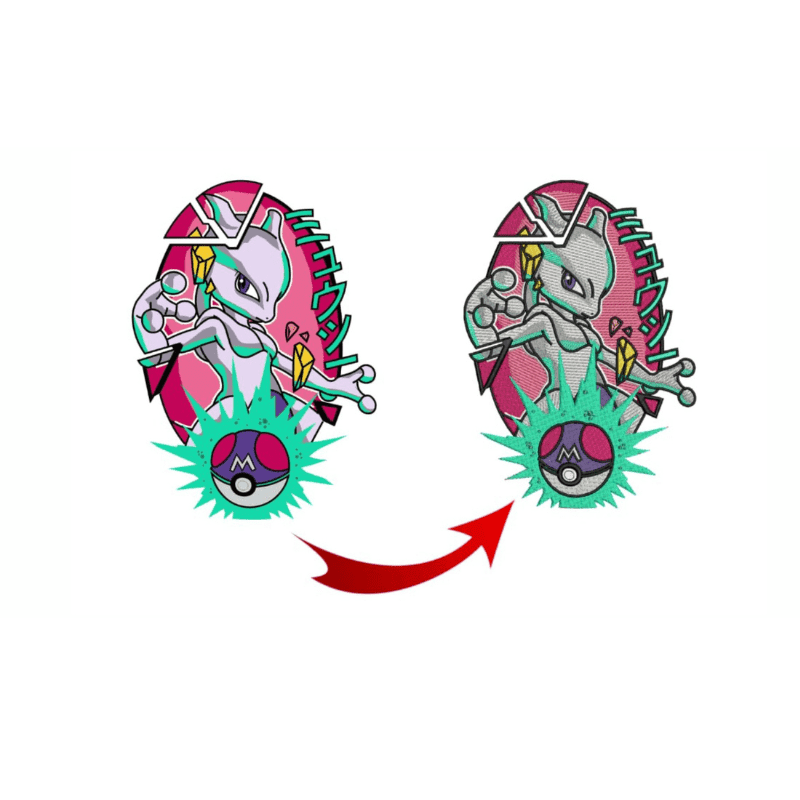Specialist Digitizing for Embroidery: High-Quality Styles
Wiki Article
Understanding the Embroidery Digitizing Refine: Your Ultimate Overview
Embroidery digitizing is a precise craft that needs precision and expertise to translate intricate designs right into electronic styles for maker embroidery. As artisans embark on this journey to understand the needlework digitizing procedure, a thorough understanding of the essentials establishes the structure for excellence.
Understanding Embroidery Digitizing Fundamentals
Embroidery digitizing fundamentals develop the foundation upon which elaborate styles are equated into machine-readable styles for accurate stitching. This first action in the needlework digitizing procedure is critical for making certain that the last stitched item is a devoted depiction of the original design. Understanding embroidery digitizing basics involves grasping key principles such as stitch kinds, sew direction, density, padding, and draw payment.Stitch types play an essential duty in figuring out the visual and textural result of the embroidered design. By picking the ideal stitch type, whether it be satin, fill, or running stitch, digitizers can achieve the wanted result and improve the overall top quality of the needlework. Additionally, sew instructions influences the flow and measurement of the style, while density establishes the spacing and protection of the stitches.
Additionally, underlay sewing offers security to the style by securing the textile and avoiding distortion throughout the needlework procedure. Pull settlement is one more essential factor to consider to counteract the all-natural tendency of textile to contract when sewn. Mastering these needlework digitizing basics is basic for producing professional-quality embroidered products.
Selecting the Right Digitizing Software Program
Selecting the suitable digitizing software program is a crucial choice that dramatically impacts the effectiveness and top quality of the embroidery digitizing procedure. Digitizing for Embroidery. When picking the right digitizing software application, it is vital to think about aspects such as the intricacy of layouts you plan to create, the user-friendliness of the software, the level of client assistance used, and the compatibility with your needlework machineThere are various digitizing software application choices offered out there, varying from standard programs for newbies to innovative software program for specialist digitizers. Some preferred selections include Wilcom EmbroideryStudio, Hatch Embroidery Software Application, and PulseID. These software provide a large range of tools and features to help you create intricate designs with ease.
Get the facts Prior to deciding, it is suggested to discover the various software application alternatives via cost-free tests or demonstrations to identify which one best matches your demands. Furthermore, checking out reviews and seeking recommendations from experienced digitizers can give beneficial understandings right into the strengths and weak points of each software program bundle (Digitizing for Embroidery). By thoroughly evaluating your needs and comparing the features of various digitizing software application, you can make an informed selection that improves your needlework digitizing process
Digitizing Tools and Strategies

Optimizing Style Settings for Embroidery
Grasping the complexities of style setups is basic in attaining optimum cause the needlework digitizing process, building upon the structure laid by understanding digitizing tools and techniques. When maximizing layout settings for needlework, check my reference it is necessary to think about elements such as stitch type, density, underlay, draw compensation, and registration. Stitch kind option influences the total feel and look of the style, with choices like satin, fill, and running stitches using different structures and impacts. Density refers to the spacing and thickness of stitches, impacting the style's coverage and toughness. Correct rug stitching provides security and protects against textile distortion, specifically for intricate layouts or on elastic materials. Pull payment changes for fabric stretch throughout sewing, making sure precise design replication. Registration setups straighten various aspects of the design accurately, maintaining total layout stability. By fine-tuning these style settings, embroiderers can enhance the quality and accuracy of their stitched developments.
Troubleshooting Common Digitizing Issues
When experiencing typical digitizing problems throughout the embroidery process, it is necessary to recognize the origin and execute reliable remedies promptly. One typical trouble is stitch density problems, where stitches might be too dense, creating the textile to pucker, or as well sparse, leading to gaps in the style. Changing the stitch density setups in the digitizing software can aid resolve this concern.One more regular obstacle is string breaks during the needlework process. This can happen because of numerous factors such as incorrect tension settings, boring needles, or utilizing low-grade string. Ensuring appropriate maintenance of the needlework maker, consisting of normal needle adjustments and stress adjustments, can minimize the occurrence of thread breaks.
Furthermore, style registration errors can lead to misaligned aspects within the embroidery style. Inspecting the style positioning in the digitizing software application and making needed modifications before stitching can help in avoiding this issue. By addressing these common digitizing concerns without delay and properly, you can ensure a smoother needlework procedure and high-quality finished items.
Verdict
In verdict, grasping the embroidery digitizing process calls for a strong understanding of the fundamentals, click to read more the best choice of software, and expertise of devices and methods. Optimizing design setups and fixing typical digitizing issues are critical actions in making sure premium embroidery outcomes. By complying with these steps diligently, one can attain precision and efficiency in the digitizing procedure.Report this wiki page